Abstract
Learning in a signaled avoidance procedure was studied in the eye withdrawal reflex of the green crab, Carcinus maenas. A puff of air to the eye, which causes eye retraction, was used as the unconditioned stimulus (US). A mild vibration on the carapace, which has no effect on untrained animals, was used as a warning (conditioned) stimulus (CS). Eye withdrawal during the CS led to the omission of the otherwise scheduled US. Acquisition was rapid, reaching about 75% avoidance after 30 trials. Extinction occurred slowly over the course of 40 CS-only trials. Yoked controls did not perform as well. The behavior of experimental animals in the avoidance procedure was found to be essentially identical to the performance of animals subjected to a classical conditioning paradigm in which CS responses had no effect on US presentation. Additional groups of animals were subjected to experiments in which (a) avoidance conditioning (60 trials) was followed by classical conditioning (40 trials) or (b) classical conditioning was followed by avoidance. The behavior of these groups was, again, essentially identical. The results suggest that there may be an underlying Pavlovian mechanism for the learned response, although the contribution of an operant process is not excluded. The results expand the range of invertebrate animals in which fundamental conditioning phenomena can be demonstrated, and may provide a neuronal model for learning in a signaled avoidance procedure.
Keywords: signaled avoidance, classical conditioning, invertebrate learning, eye retraction, crustaceans, green crab
Full text
PDF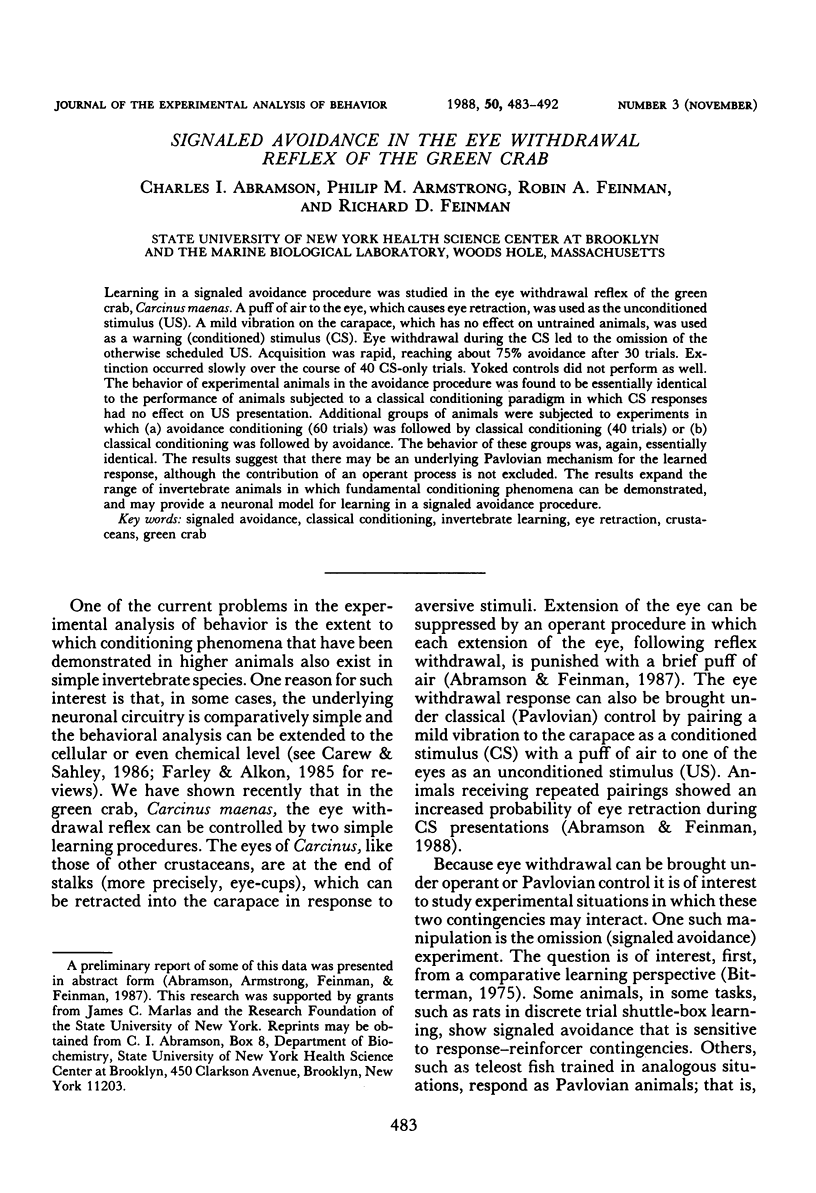
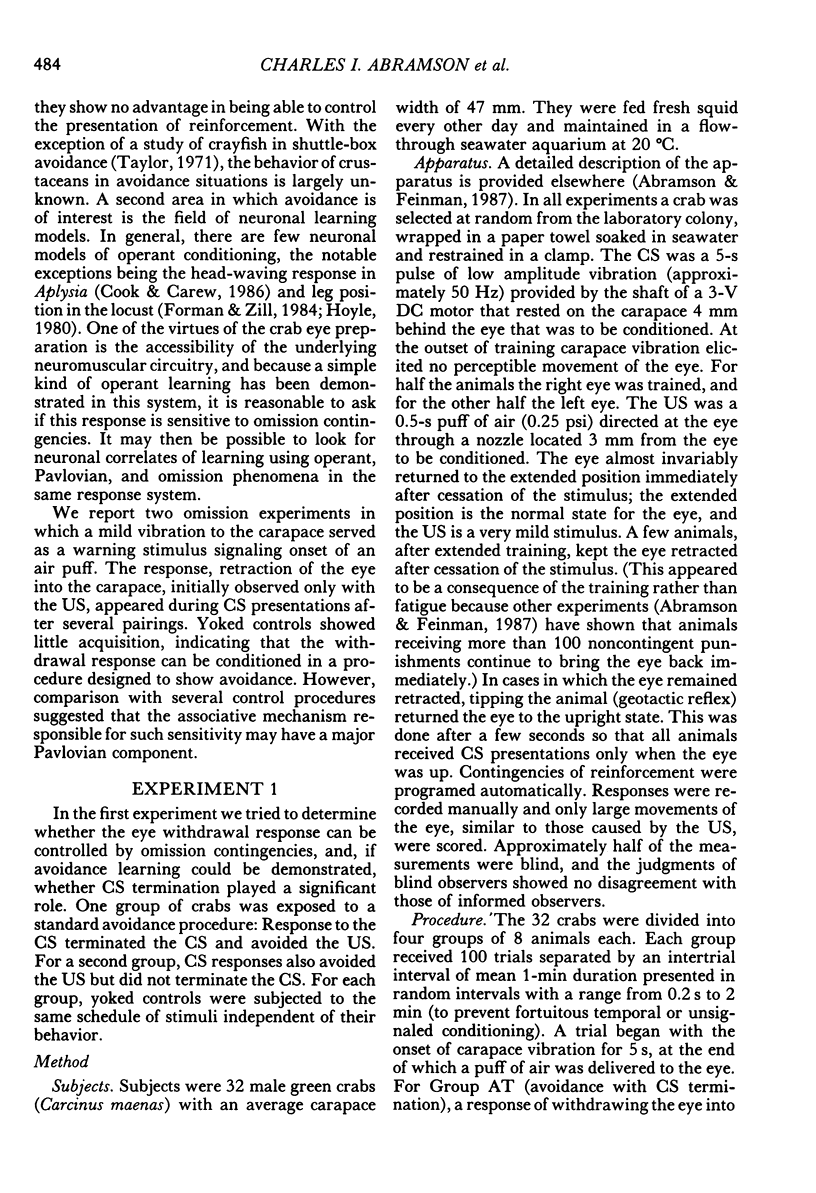
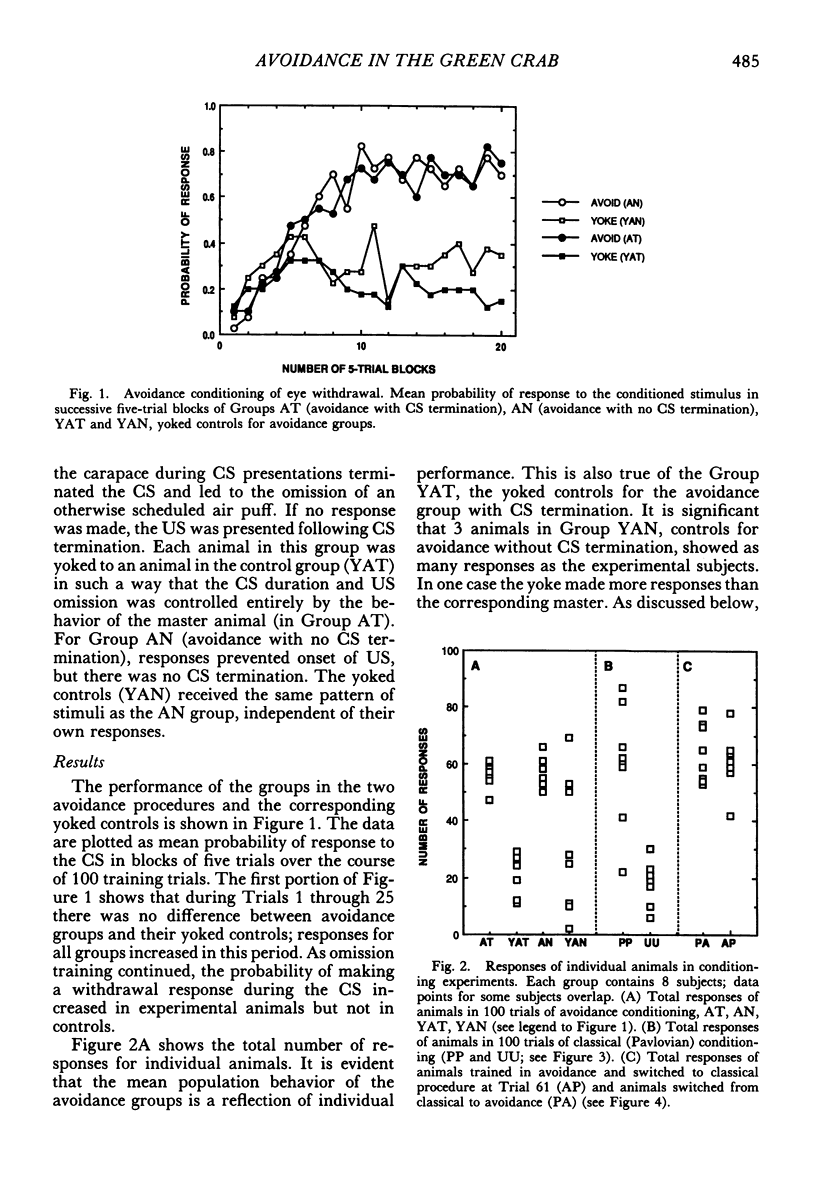
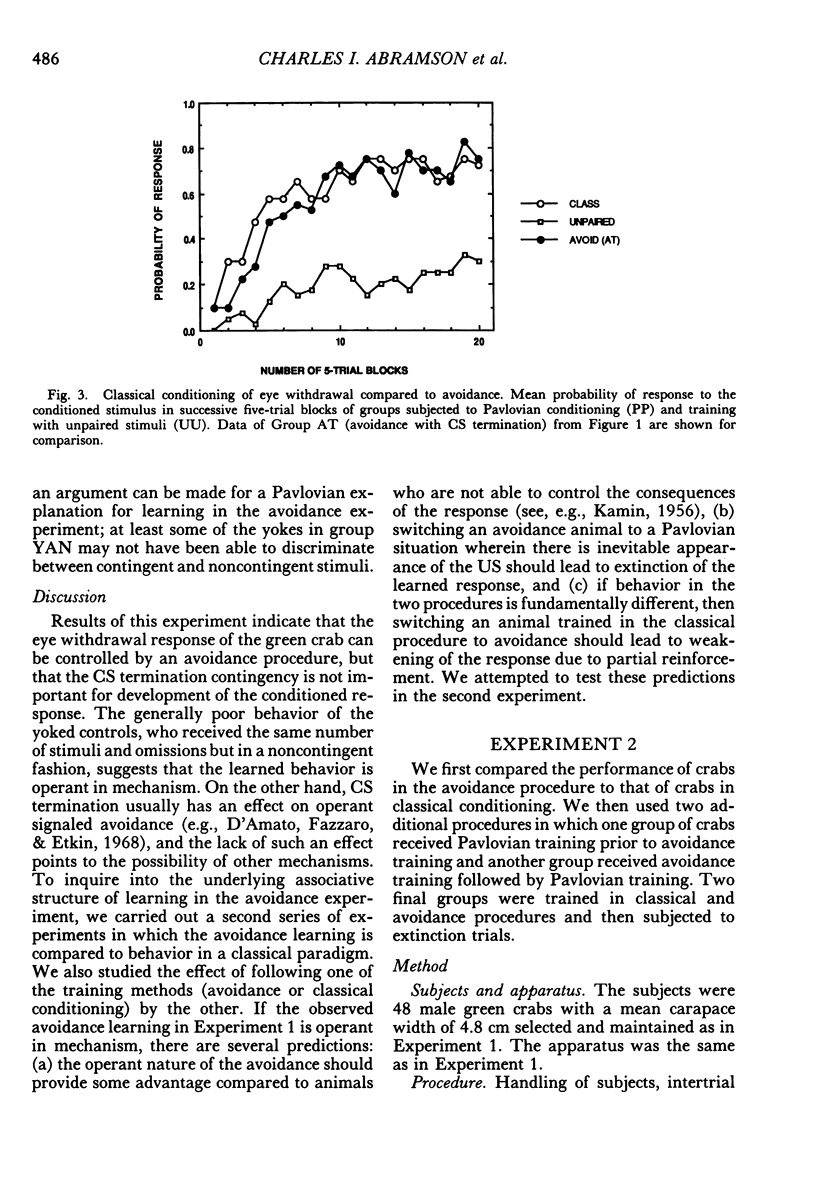
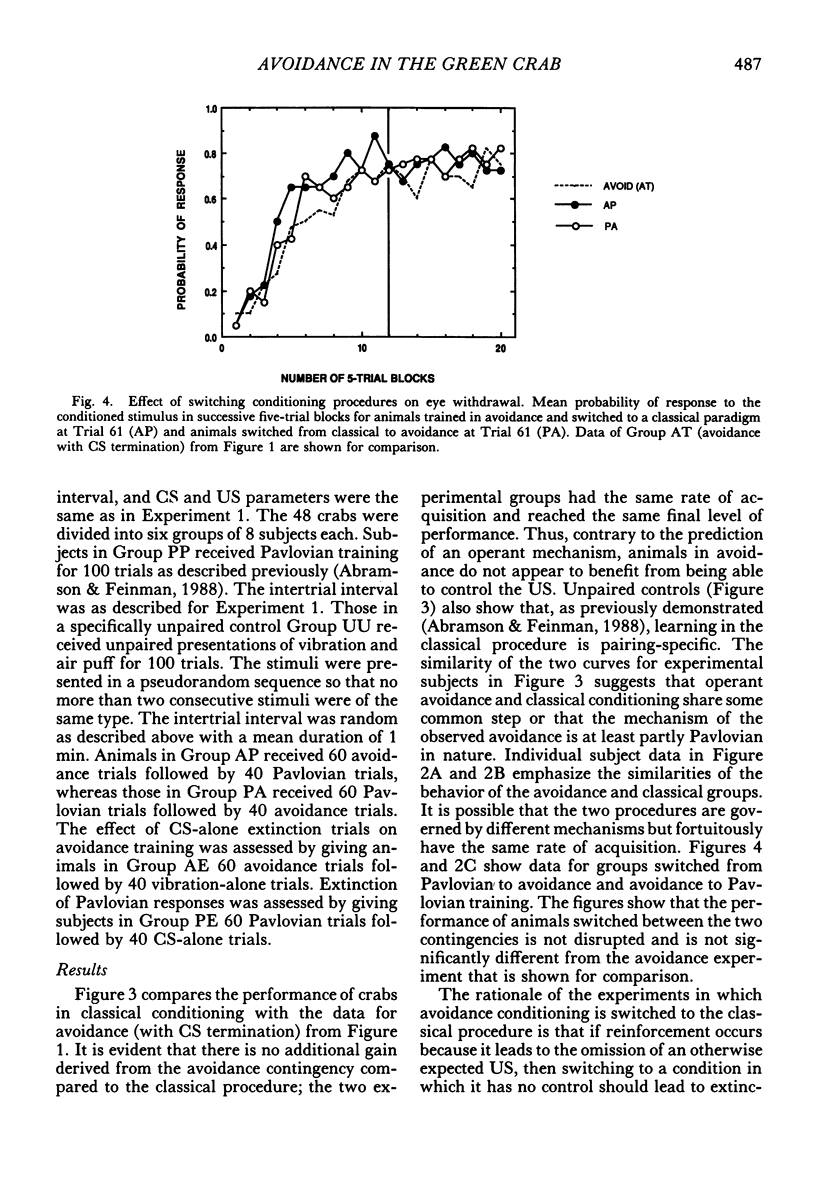
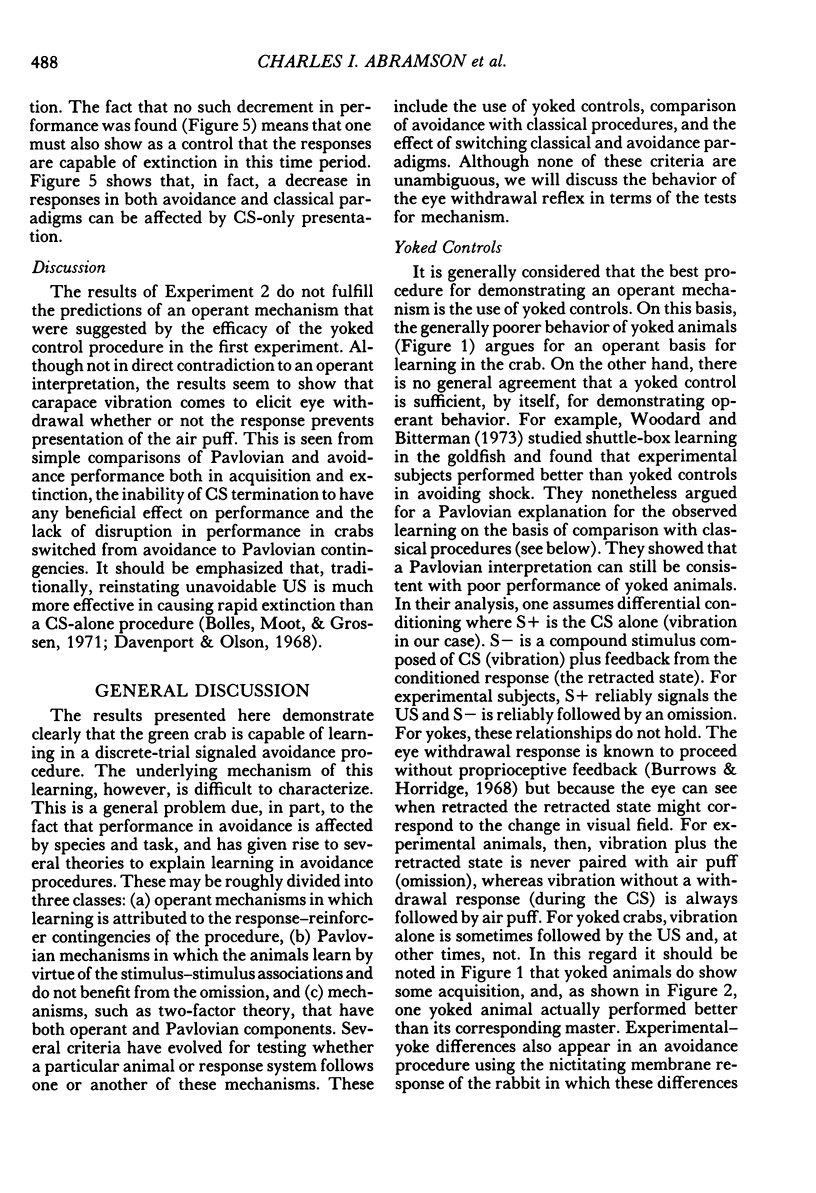
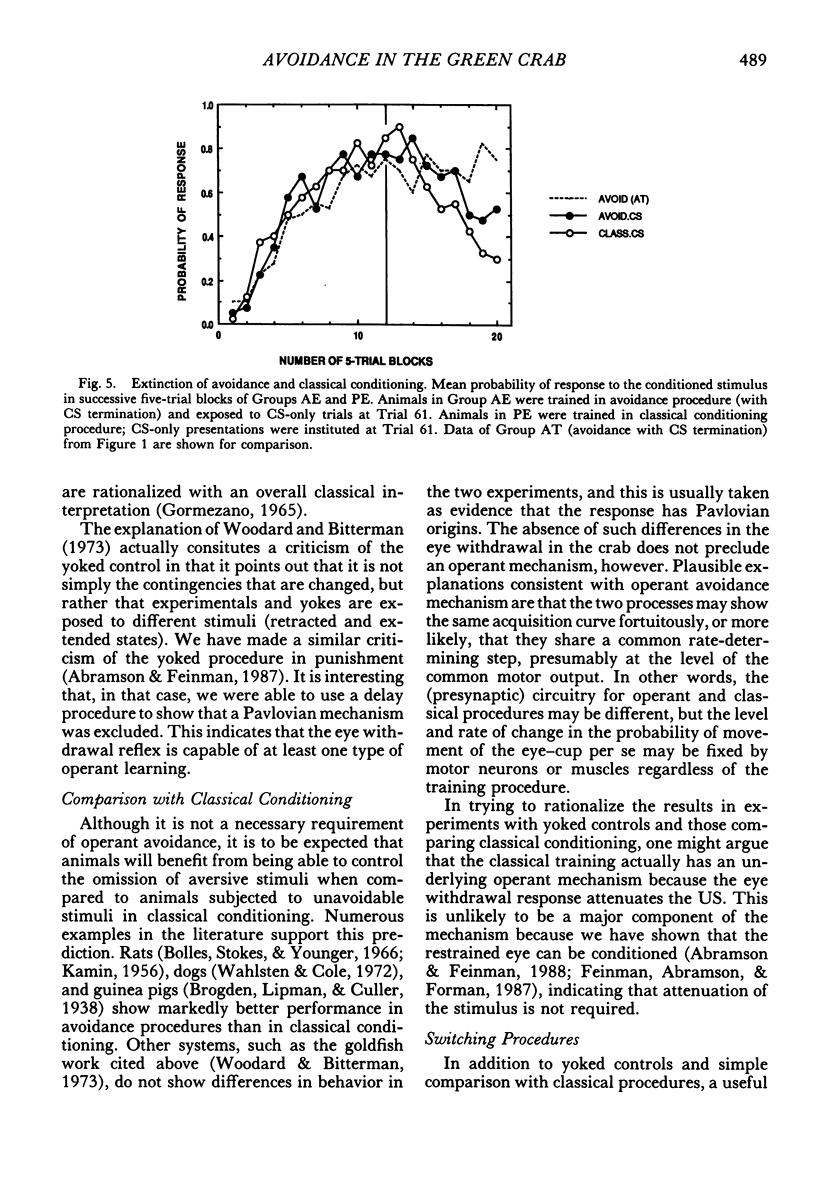

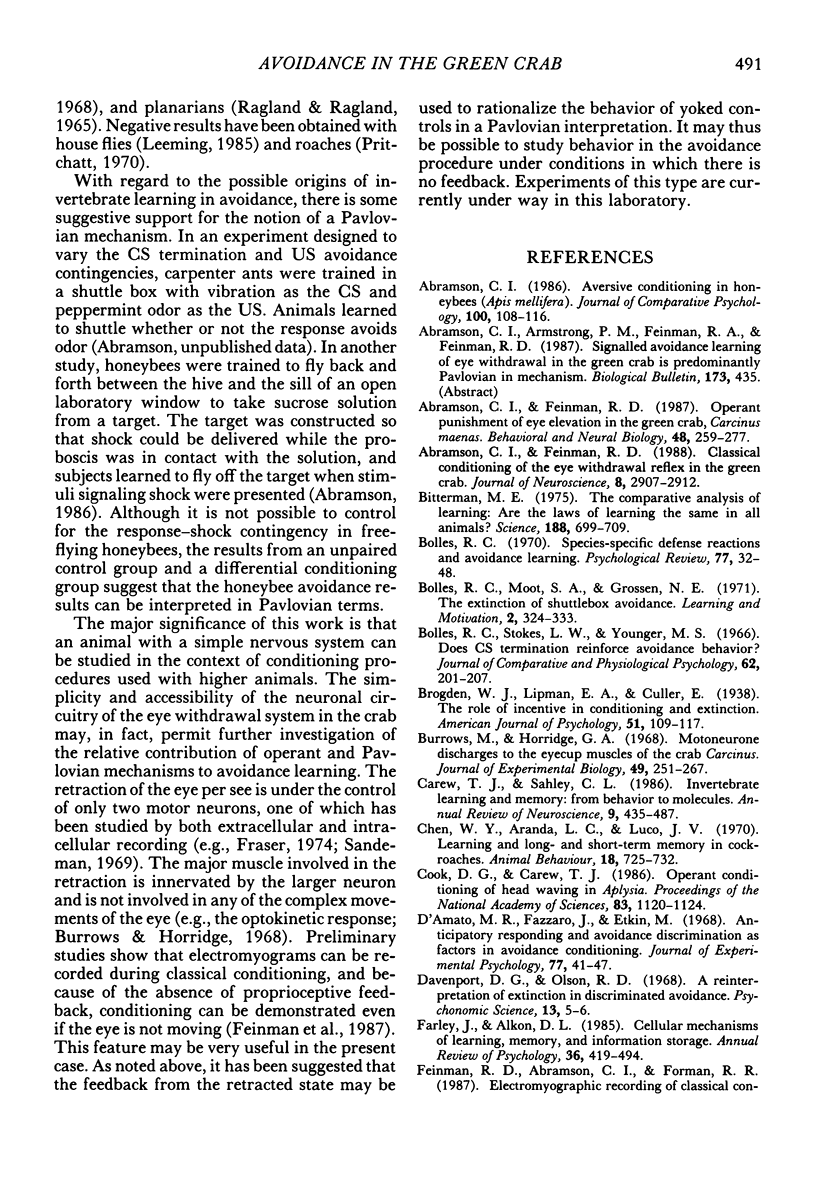
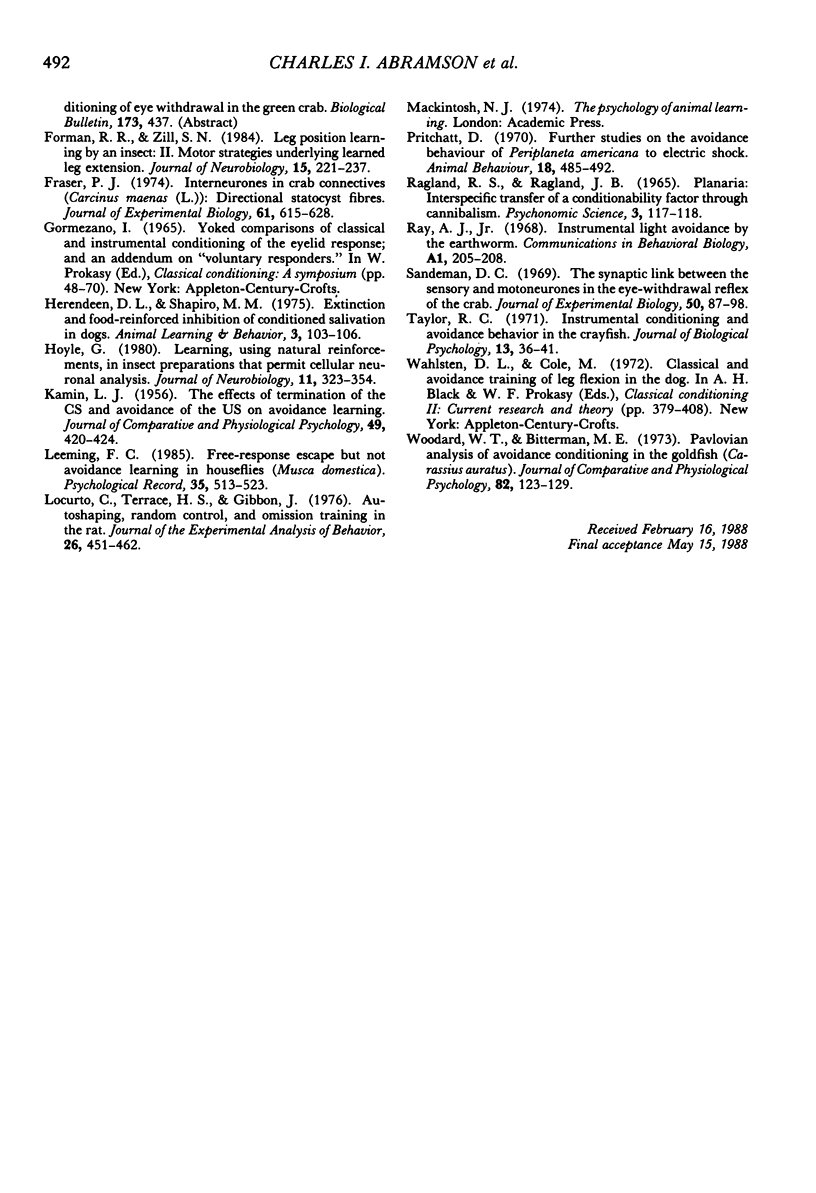
Selected References
These references are in PubMed. This may not be the complete list of references from this article.
- Abramson C. I., Feinman R. D. Classical conditioning of the eye withdrawal reflex in the green crab. J Neurosci. 1988 Aug;8(8):2907–2912. doi: 10.1523/JNEUROSCI.08-08-02907.1988. [DOI] [PMC free article] [PubMed] [Google Scholar]
- Abramson C. I., Feinman R. D. Operant punishment of eye elevation in the green crab, Carcinus maenas. Behav Neural Biol. 1987 Sep;48(2):259–277. doi: 10.1016/s0163-1047(87)90822-3. [DOI] [PubMed] [Google Scholar]
- Bitterman M. E. The comparative analysis of learning. Science. 1975 May 16;188(4189):699–709. doi: 10.1126/science.188.4189.699. [DOI] [PubMed] [Google Scholar]
- Bolles R. C., Stokes L. W., Younger M. S. Does CS termination reinforce avoidance behavior? J Comp Physiol Psychol. 1966 Oct;62(2):201–207. doi: 10.1037/h0023678. [DOI] [PubMed] [Google Scholar]
- Carew T. J., Sahley C. L. Invertebrate learning and memory: from behavior to molecules. Annu Rev Neurosci. 1986;9:435–487. doi: 10.1146/annurev.ne.09.030186.002251. [DOI] [PubMed] [Google Scholar]
- Cook D. G., Carew T. J. Operant conditioning of head waving in Aplysia. Proc Natl Acad Sci U S A. 1986 Feb;83(4):1120–1124. doi: 10.1073/pnas.83.4.1120. [DOI] [PMC free article] [PubMed] [Google Scholar]
- D'Amato M. R., Fazzaro J., Etkin M. Anticipatory responding and avoidance discrimination as factors in avoidance conditioning. J Exp Psychol. 1968 May;77(1):41–47. doi: 10.1037/h0025763. [DOI] [PubMed] [Google Scholar]
- Farley J., Alkon D. L. Cellular mechanisms of learning, memory, and information storage. Annu Rev Psychol. 1985;36:419–494. doi: 10.1146/annurev.ps.36.020185.002223. [DOI] [PubMed] [Google Scholar]
- Forman R. R., Zill S. N. Leg position learning by an insect: II. Motor strategies underlying learned leg extension. J Neurobiol. 1984 May;15(3):221–237. doi: 10.1002/neu.480150305. [DOI] [PubMed] [Google Scholar]
- Fraser P. J. Interneurones in crab connectives (Carcinus maenas (L.)) DIRECTIONAL STATOCYST FIBRES. J Exp Biol. 1974 Dec;61(3):615–628. doi: 10.1242/jeb.61.3.615. [DOI] [PubMed] [Google Scholar]
- Hoyle G. Learning, using natural reinforcements, in insect preparations that permit cellular neuronal analysis. J Neurobiol. 1980 Jul;11(4):323–354. doi: 10.1002/neu.480110402. [DOI] [PubMed] [Google Scholar]
- KAMIN L. J. The effects of termination of the CS and avoidance of the US on avoidance learning. J Comp Physiol Psychol. 1956 Aug;49(4):420–424. doi: 10.1037/h0088011. [DOI] [PubMed] [Google Scholar]
- Locurto C., Terrace H. S., Gibbon J. Autoshaping, random control, and omission training in the rat. J Exp Anal Behav. 1976 Nov;26(3):451–462. doi: 10.1901/jeab.1976.26-451. [DOI] [PMC free article] [PubMed] [Google Scholar]
- Sandeman D. C. The synaptic link between the sensory and motoneurones in the eye-withdrawal reflex of the crab. J Exp Biol. 1969 Feb;50(1):87–98. doi: 10.1242/jeb.50.1.87. [DOI] [PubMed] [Google Scholar]
- Woodard W. T., Bitterman M. E. Pavlovian analysis of avoidance conditioning in the goldfish (Carassius auratus). J Comp Physiol Psychol. 1973 Jan;82(1):123–129. doi: 10.1037/h0033820. [DOI] [PubMed] [Google Scholar]


